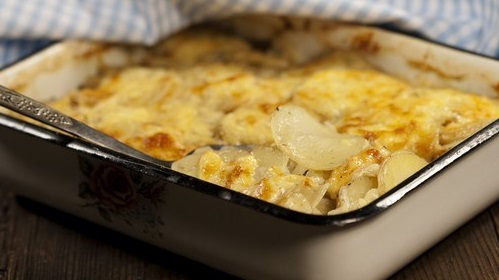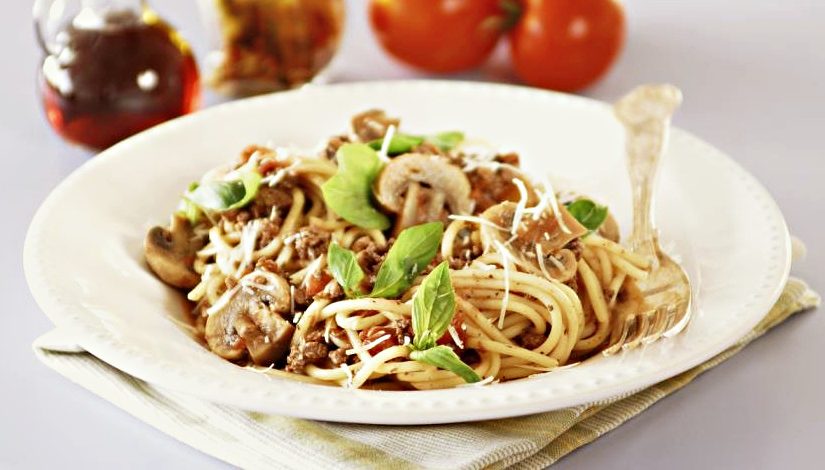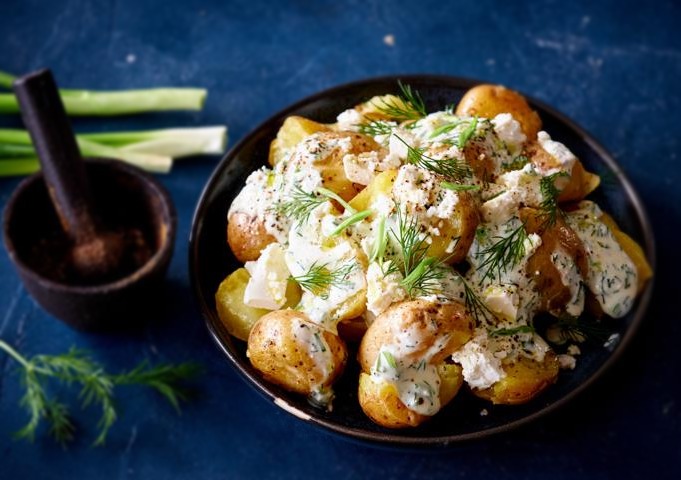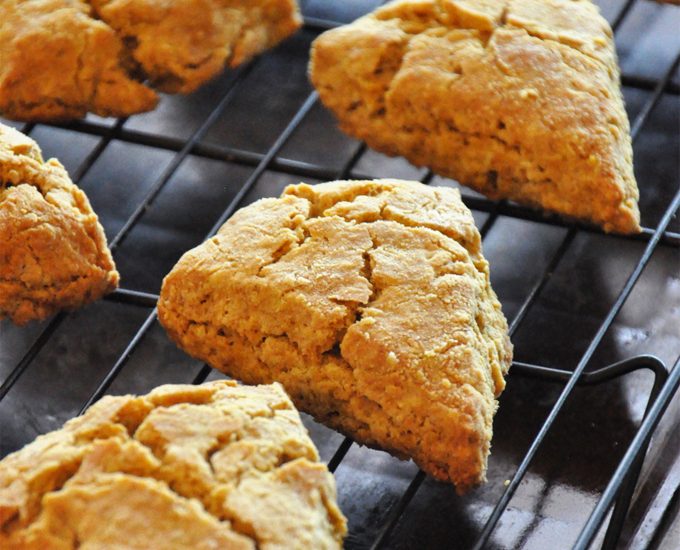Adapted from Naomi Pomeroy’s book “Taste and Technique”, this exquisite gratin combines Gruyère sauce, crunchy bread crumbs and braised fennel to create a delicious symphony of flavors. As expected of this fantastic book, this gratin is a tad more labor intensive than expected, but every component is key to making this beautiful dish. In this recipe, a lot happens at once, so calm yourself, prep all your ingredients at the start, and be sure to read through the recipe at least once before beginning. You can get a head start by toasting the bread crumbs and storing at room temp. The fennel and cheese sauce can also be made a day in advance, refrigerated separately, and are ready to use when you’re at the assembly/baking stage. This gratin is perfect for when entertaining.
Ingredients
For the bread crumb topping:
- ¼ large loaf artisanal bread (roughly 5 ounces)
- 2 tablespoons butter (unsalted)
- 1 teaspoon garlic paste (see note below)
- ½ teaspoon fennel pollen
- ¼ teaspoon black pepper
- 3 tablespoons fennel fronds, chopped roughly (optional)
For the fennel:
- 4-5 large fennel bulbs (3-4 inches), or 6- 8 small bulbs (2-3 inches), some fronds attached is okay
- 1 tablespoon kosher salt
- 1 teaspoon black pepper
- 2 tablespoons olive oil (extra-virgin)
- 4 tablespoons butter (unsalted)
- ¾ cup chicken stock, homemade is preferred
- ¼ cup good white wine
For the cheese sauce:
- 3 tablespoons butter (unsalted)
- 3 tablespoons flour (all-purpose)
- 2 teaspoons garlic paste (see note below)
- 2 ½ cups whole milk
- 3 ounces cave-aged Gruyère cheese (grated)
- ½ teaspoon kosher salt
- ¼ teaspoon black pepper
For assembly:
- 2 ounces cave-aged Gruyère cheese (grated)
- 2 ounces Parmigiano-Reggiano cheese (ground, or finely hand chopped) (see note below)
Nutritional Information
Nutritional analysis per serving (6 servings):
556 calories; 37 grams fat; 19 grams protein; 20 grams saturated fat12 grams monounsaturated fat; 2 grams polyunsaturated fat; ; 0 grams trans fat; 37 grams carbohydrates; 8 grams dietary fiber; 15 grams sugars; 92 milligrams cholesterol; 1036 milligrams sodium
Note:
The information shown is only an estimate based on the available ingredients and specified preparation. This should not take the place of a professional nutritionist’s advice.
Preparation
- Bread crumb toasting: Heat oven to 250. Remove any crusts, and slice ¼ in thick before tearing into ½ inch pieces. Place on a baking sheet/tray and bake until completely dry, brittle, but without color – roughly 40-45 min. Allow to cool, then break into pebble-sized pieces, either in a plastic bag or between 2 sheets of parchment/baking paper. Take a rolling pin and gently roll across the top multiple times until your crumbs have a rustic texture – we’re looking for the size to be larger than a grain of rice, yet smaller than a pea. Measure out ¾ cup of crumbs, set aside for later. If you have remaining crumbs, save for another use.
- In the meantime, prepare the fennel: Chop up 3 tablespoons of fronds, and set aside. If using small bulbs, cut in half lengthwise. If using large bulbs, cut into quarters lengthwise. In either instance, leave the base fully attached. Place fennel pieces cut side up, and season with salt & pepper according to preference.
- Take your largest sauté pan and heat on a med-high heat before adding your oil & butter. Add fennel pieces cut side down, and sear until they turn a deep chestnut brown, approx. 2-3 minutes – be sure to work in batches to avoid overcrowding. If you have opted for large fennel, be sure to flip the quarters to sear the other cut surface for an additional 2-3 minutes. Once done, transfer the fennel into a large Dutch oven.
- In your Dutch oven add the stock & wine, place on a low heat, cover, and allow to simmer for 20-25 minutes, until the fennel is tender to a fork, but not yet mushy. Use a slotted spoon or tongs to neatly place the fennel in a 9 by 13 inch broiler-proof baking dish – set aside.
- Preparing the bread crumb topping: Over low-medium heat, melt the butter in a medium saucepan. Add bread crumbs, garlic paste, pepper, and fennel pollen, stirring frequently until your crumbs are a perfect pale gold, roughly 2-3 minutes. Don’t allow to take on too much color. Take off heat, and mix in your chopped up fennel fronds.
- Making the cheese sauce: Place a saucepan on a medium heat, melt the butter & whisk in the flour. Whisk for roughly a minute before adding the garlic paste. Whisk until you see a pale gold color in your flour, roughly 2-3 min – we’re looking for a color between off-white, and not quite beige.
- Slowly whisk in your milk. Once all has been added, whisk robustly until your sauce is entirely smooth. Turn heat down to low-medium and simmer, making sure to whisk occasionally to prevent scorching, for roughly 10-12 minutes, until the sauce has fully thickened. Remove from heat, mix in the Gruyère, and season with salt & pepper to taste. The resulting sauce should be quite thick.
- Assembly: Place a rack in the upper third of your oven before heating to 350. Pour the cheese sauce over fennel (if sauce is cold, very gently reheat), and sprinkle the Parmigiano-Reggiano and Gruyère over the top. Bake for roughly 15-20 minutes, until bubbling and starting to brown.
- Take gratin out of oven and sprinkle the bread crumb topping across the top in an even layer. Place back in oven and back until it takes a deep golden hue, approx. 5 minutes. If you find the gratin still needs more color, a minute under the broiler should suffice – watch carefully to make sure it doesn’t burn. Serve immediately and enjoy!
Tips
- Making garlic paste (for topping & cheese sauce): Smash 3 cloves of garlic with the flat side of a chef’s knife. Roughly chop the garlic, and season with ¾ teaspoon of kosher salt. To make into a fine paste, run the flat side of the knife blade back & forth over the garlic.
- In order to grind the Parmigiano-Reggiano, cut a small block of cheese into approx. ½ inch cubes & place in a food processor. Pulse until cheese moves freely, then continue processing until very small pebble pieces – the texture we’re looking for is similar to a fine, coarse cornmeal.




